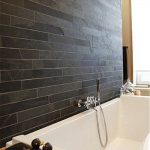Introduction
Cultured river rock is a popular choice in landscaping and interior design due to its natural beauty and versatility. Made from a blend of natural stone and cement, cultured river rock offers the aesthetic appeal of real river rocks while being more lightweight and easier to work with. In this article, we will delve into the world of cultured river rock, exploring its origins, properties, uses, and maintenance tips.
Origins of Cultured River Rock
Cultured river rock is a man-made product that mimics the appearance of natural river rocks. It is created by blending natural stone aggregates, such as granite, quartz, and limestone, with cement and other additives to achieve the desired texture and color. The mixture is then poured into molds to form individual stones that closely resemble the shape and size of real river rocks.
The concept of cultured river rock dates back to ancient times when artisans would handcraft stones to replicate the look of natural materials for decorative purposes. Over the years, advancements in technology and manufacturing processes have allowed for the mass production of cultured river rock, making it more accessible and affordable for homeowners and designers.
Properties of Cultured River Rock
Cultured river rock offers a range of properties that make it a desirable choice for various applications. Some of the key properties of cultured river rock include:
1. Aesthetic Appeal: Cultured river rock is prized for its natural beauty and rustic charm. It comes in a variety of colors and shapes, allowing for endless design possibilities in landscaping and interior décor.

2. Lightweight: Compared to natural river rocks, cultured river rock is lighter and easier to handle, making it a practical choice for DIY projects and large-scale installations.
3. Durable: Cultured river rock is made from a blend of natural stone aggregates and cement, giving it durability and longevity. It can withstand the elements and maintain its appearance over time.
4. Versatile: Cultured river rock can be used in a wide range of applications, including garden pathways, water features, accent walls, and fireplace surrounds. Its versatility makes it a popular choice for both residential and commercial projects.
Uses of Cultured River Rock
Cultured river rock can be incorporated into a variety of design projects, both indoors and outdoors. Some common uses of cultured river rock include:
1. Landscaping: Cultured river rock is a popular choice for landscaping projects, such as creating garden pathways, edging flower beds, and accentuating water features. Its natural appearance blends seamlessly with outdoor environments and adds a touch of elegance to the landscape.
2. Interior Décor: Cultured river rock can also be used to enhance the interior of homes and commercial spaces. continue reading this.. can be installed as a backsplash in kitchens, as a feature wall in living rooms, or as a decorative element in bathrooms. The rustic charm of cultured river rock adds warmth and character to any indoor space.
3. Water Features: Cultured river rock is often used to create stunning water features, such as ponds, waterfalls, and fountains. The natural look of the stones enhances the visual appeal of the water feature and creates a tranquil atmosphere in outdoor settings.
4. Fireplaces: Cultured river rock can be used to surround fireplaces and create a cozy focal point in living rooms and outdoor living areas. The textured surface of the stones adds depth and visual interest to the fireplace design.
Maintenance Tips for Cultured River Rock
To keep cultured river rock looking its best, proper maintenance is essential. Here are some tips for caring for cultured river rock:
1. Cleaning: Regularly clean cultured river rock surfaces with a mild detergent and water to remove dirt, dust, and debris. Avoid using harsh chemicals or abrasive cleaners that can damage the stones.
2. Sealing: Consider applying a sealant to cultured river rock surfaces to protect them from stains and moisture. Be sure to follow the manufacturer's instructions for proper application and reapplication of the sealant.
3. Avoiding Abrasive Materials: Do not use abrasive materials, such as wire brushes or scouring pads, to clean cultured river rock as they can scratch the surface and dull the finish. Instead, use a soft brush or cloth to gently clean the stones.
4. Preventing Stains: To prevent stains on cultured river rock surfaces, wipe up spills promptly and avoid placing hot items directly on the stones. Use coasters or trivets to protect the surface from heat and moisture damage.
5. Inspecting for Damage: Periodically inspect cultured river rock surfaces for signs of damage, such as cracks, chips, or discoloration. Address any issues promptly to prevent further deterioration and maintain the beauty of the stones.
Conclusion
Cultured river rock is a versatile and stylish choice for landscaping and interior design projects. With its natural beauty, durability, and ease of maintenance, cultured river rock offers a practical and aesthetic solution for enhancing outdoor and indoor spaces. Whether used in garden pathways, water features, accent walls, or fireplace surrounds, cultured river rock adds a touch of rustic charm and elegance to any environment. By following proper maintenance practices, homeowners and designers can enjoy the timeless appeal of cultured river rock for years to come.
